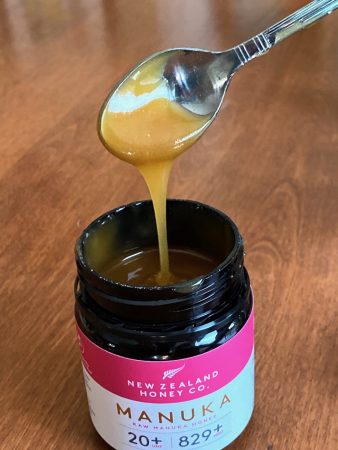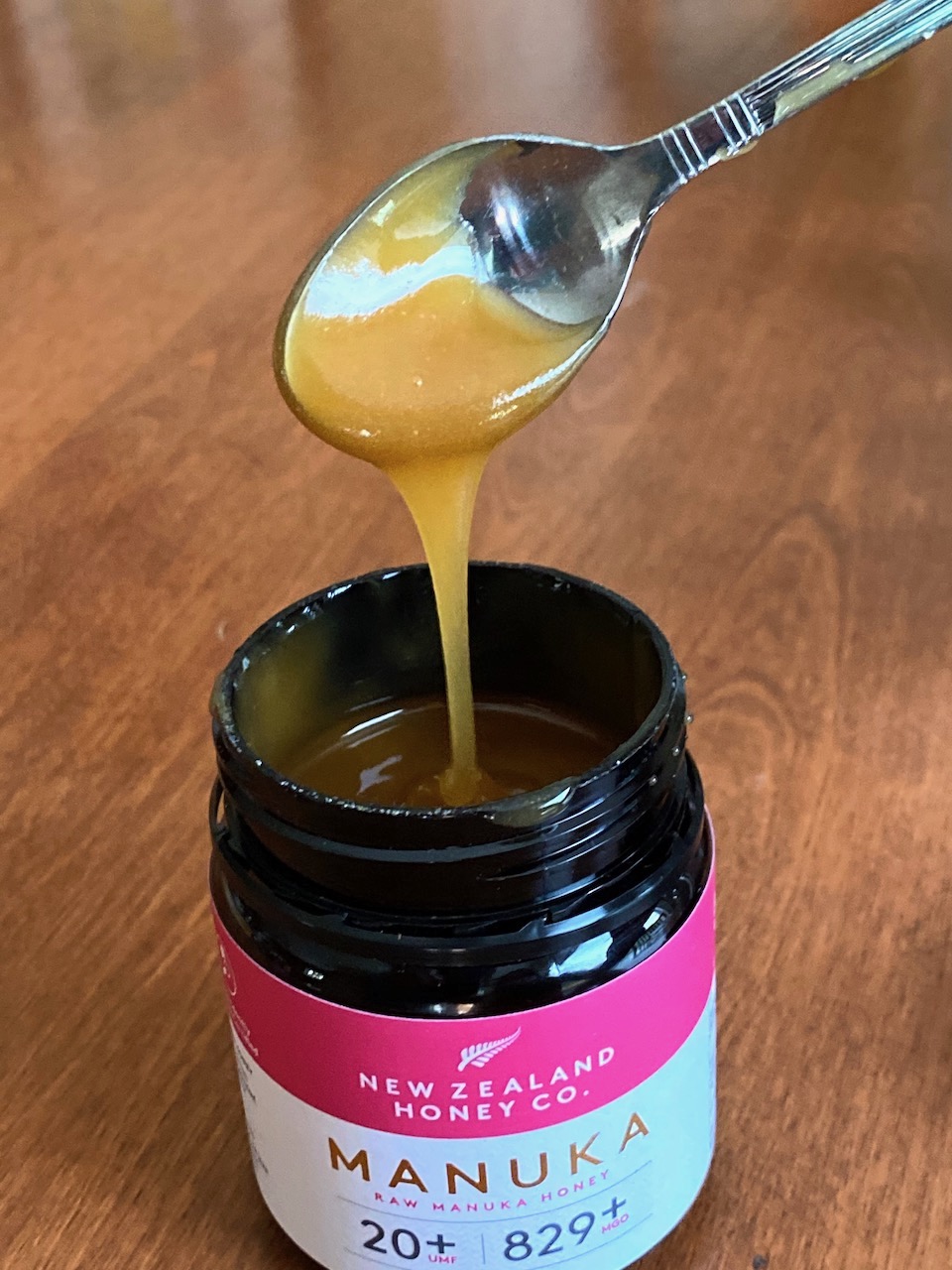Best Manuka Honey Cream: Tips & Advice
Yes, there is an ongoing Manuka honey craze, with folks using it for all sorts of things, from culinary treats to beauty to skin care.
But what exactly is manuka honey? And why is it so pricey?
Manuka honey is made from bees who pollinate a specific tree (yes, it is called the Manuka tree) only found in New Zealand and Australia. The honey is very thick, with a distinct, fragrant flavor and aroma.
Here’s what Manuka honey looks like before it is turned into skin cream:

Due to its popularity and relatively small supply (Manuka trees only flower for two to six weeks a year), Manuka honey sells at a premium.
When shopping for Manuka honey products, there are two acronyms to consider: MGO and UMF.
Like all honey, Manuka honey has antibacterial properties. Without getting too deep into the weeds of honey chemistry, one measure of this honey’s antibiotic concentrations is called MGO (methylglyoxal). Manuka honey ranges from 10 MGO (for culinary use) to 800 MGO, which some folks use for skin care and other purposes.
What is UMF? The Unique Manuka Factor (UMF) is a lab-tested rating system New Zealand manufacturers use certify the potency of Manuka honey. Low grade honey has a UMF of 5 to 9. Medium grade is 10 to 15, while superior is 16+. (FYI: UMF is the brainchild of a marketing association of Manuka honey makers in New Zealand who sought a way to consistently grade honey).
You’ll note that some of creams in this article specifically note the UMF factor (example: 12+). We prefer face creams that specify the UMF or MGO ratings.
FYI: Australia also produces Manuka honey—and there is debate among manuka honey enthusiasts as to which is better. All of the face creams in this article use Manuka honey sourced in New Zealand.
We sampled several Manuka honey creams to see which ones were the best at moisturizing. We also judged the creams on their scent and overall weight (lighter, the better!).
Here are the ones we think are best:
Why Trust Us
We’ve been rating and reviewing products for the home and families since 1994. We do extensive research, evaluating products with an eye toward quality, ease of use and affordability. When we purchase a product for hands-on testing, we do so with our own money.
Here’s another key point: we don’t take money from the brands we review. No free samples, no sponsors, no “partnerships.” Our work is 100% reader-supported!


 We obsess over baby gear . . . so you don't have to. Baby Bargains has one mission: help you find the best gear for your baby with unbiased reviews by experts with 20 years of experience. At prices that don't break the bank. When you purchase a product from links on this site, we make a small affiliate commission. Learn more
We obsess over baby gear . . . so you don't have to. Baby Bargains has one mission: help you find the best gear for your baby with unbiased reviews by experts with 20 years of experience. At prices that don't break the bank. When you purchase a product from links on this site, we make a small affiliate commission. Learn more 
